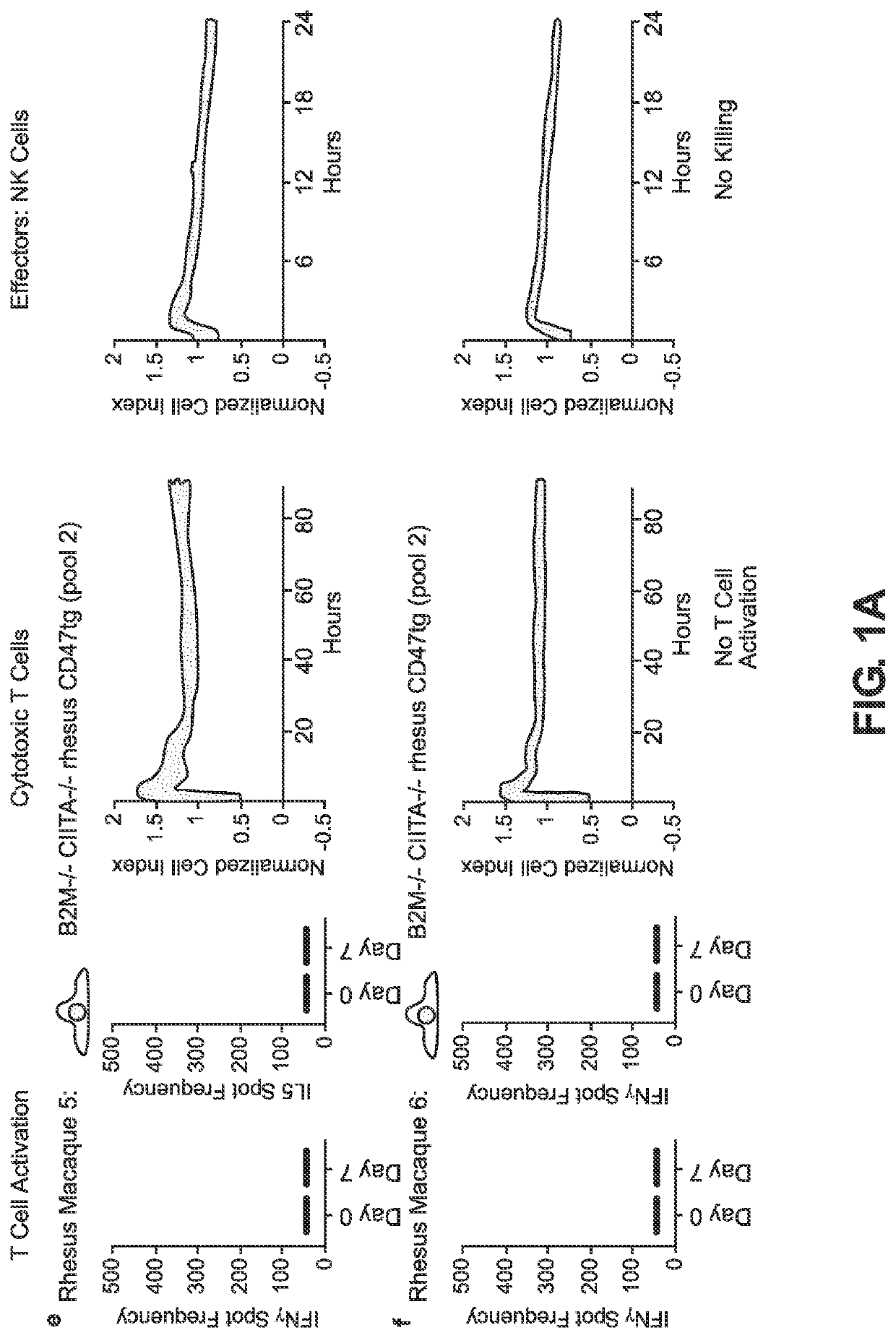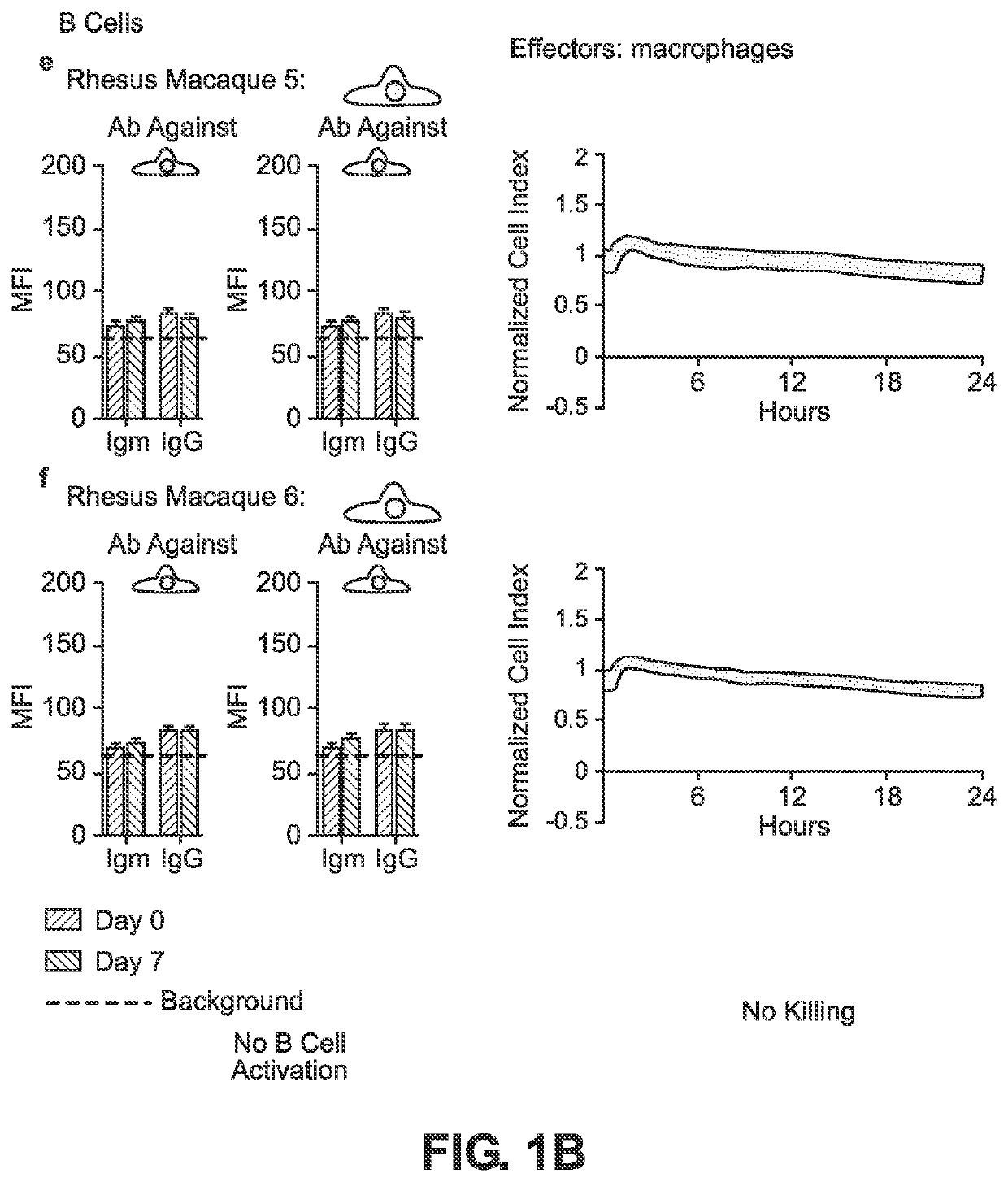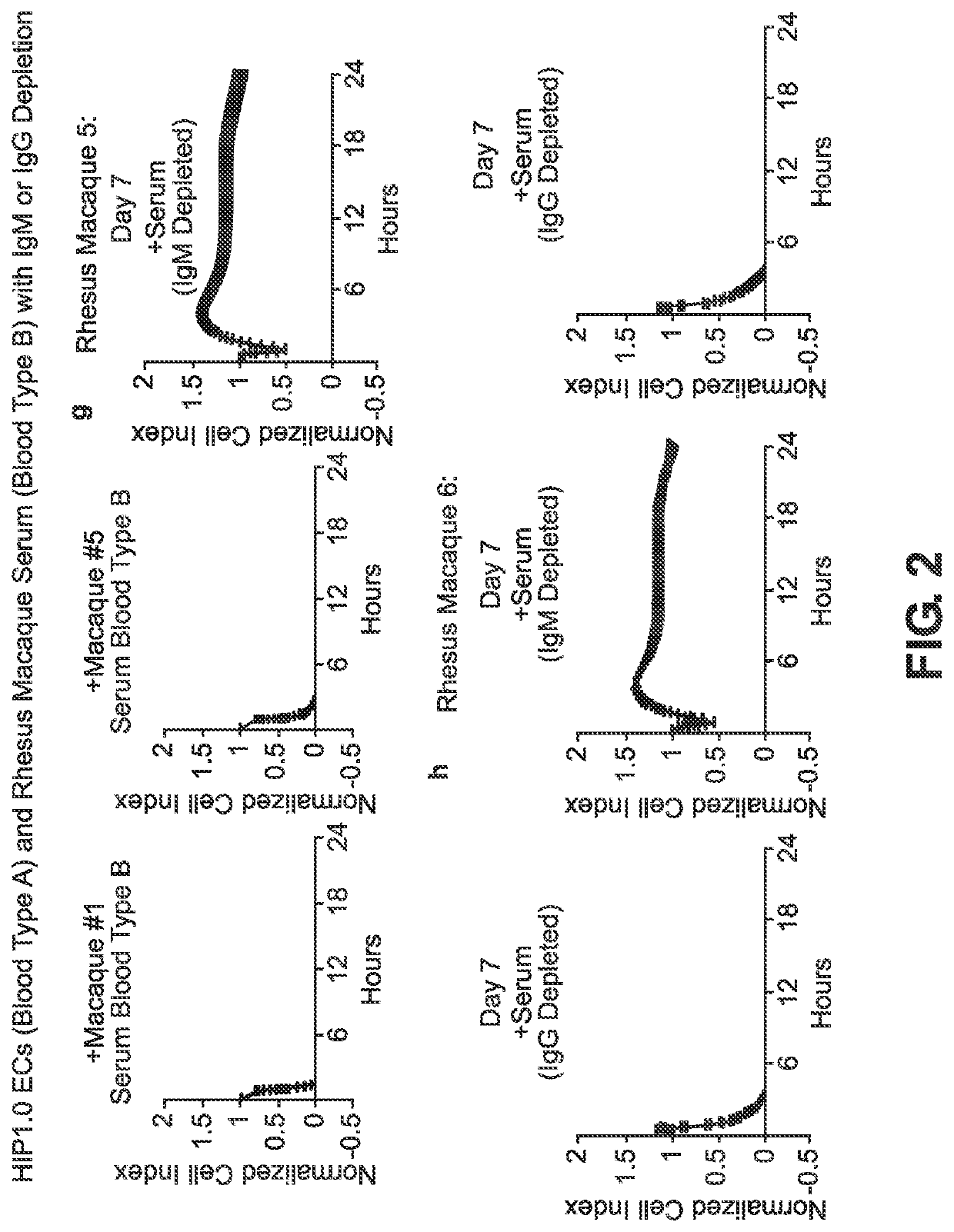BLOOD TYPE O Rh- HYPO-IMMUNOGENIC PLURIPOTENT CELLS
a technology of rh-hypoimmunogenic pluripotent cells and blood type o rh-hypoimmunogenic pluripotent cells, which is applied in the direction of genetically modified cells, skeletal/connective tissue cells, peptides, etc., can solve the problems of reducing the potential efficacy of therapeutics, reducing the positive effects surrounding such treatments, and posing technical and manufacturing challenges. , to achieve the effect of reducing the expression
- Summary
- Abstract
- Description
- Claims
- Application Information
AI Technical Summary
Benefits of technology
Problems solved by technology
Method used
Image
Examples
example 7
G. Differentiation of Human HIPO− Cells
[0267]1. Differentiation of hHIPO− Cells to Human Cardiomyocytes
[0268]This is done using a protocol adapted from Sharma et al., J Vis Exp. 2015 doi: 10.3791 / 52628, hereby incorporated by reference in its entirety and specifically for the techniques to differentiate the cells. HIPO− cells are plated on diluted Matrigel (356231, Corning) in 6-well plates and maintained in Essential 8 Flex media (Thermo Fisher). After the cells arrive at 90% confluency, the differentiation is started and media is changed to 5 mL of RPMI1640 containing 2% ß-27 minus Insulin (both Gibco) and 6 uM CHIR-99021 (Selleck Chem). After 2 days, media is changed to RPMI1640 containing 2% ß-27 minus Insulin without CHIR. On day 3, 5 uL IWR1 is added to the media for two further days. At day 5, the media is changed back to RPMI 1640 containing 2% ß-27 minus insulin medium and incubated for 48 hr. At day 7, media is changed to RPMI 1640 containing B27 plus insulin (Gibco) and ...
PUM
 Login to View More
Login to View More Abstract
Description
Claims
Application Information
 Login to View More
Login to View More - R&D
- Intellectual Property
- Life Sciences
- Materials
- Tech Scout
- Unparalleled Data Quality
- Higher Quality Content
- 60% Fewer Hallucinations
Browse by: Latest US Patents, China's latest patents, Technical Efficacy Thesaurus, Application Domain, Technology Topic, Popular Technical Reports.
© 2025 PatSnap. All rights reserved.Legal|Privacy policy|Modern Slavery Act Transparency Statement|Sitemap|About US| Contact US: help@patsnap.com



